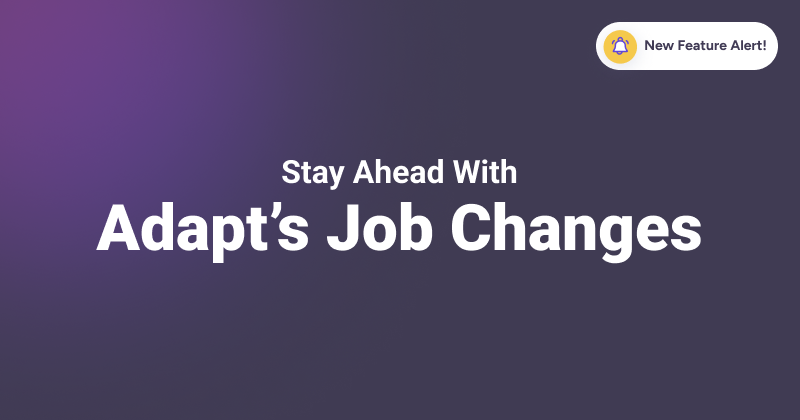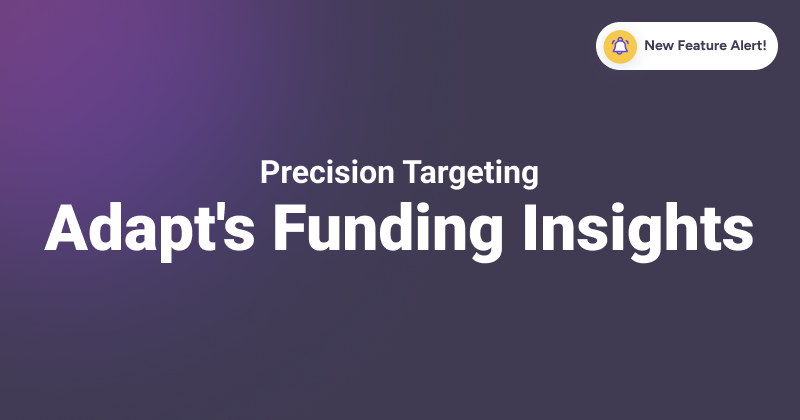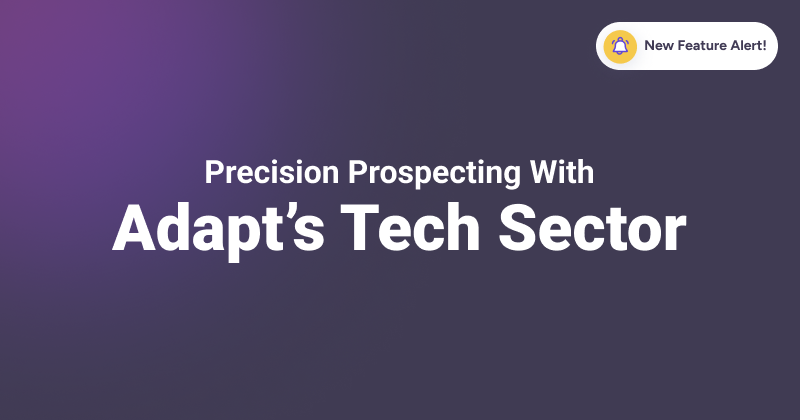Picture this: You’ve meticulously crafted an email campaign with an irresistible offer, brimming with captivating visuals and compelling content. You hit “send” with anticipation, eager for the positive responses flooding your inbox.
But as the days pass, your excitement dwindles, and you’re left wondering why your campaign failed to make the impact you envisioned.
In this competitive world of digital communication, standing out from the crowd and engaging your audience requires more than just a well-crafted message.
It demands a deeper understanding of your subscribers’ preferences and needs – a level of insight that can only be achieved through the strategic art of Email List Segmentation.
This strategic approach to email marketing elevates your email campaigns by delivering relevant content directly to the right audience, maximizing engagement, and conversion rates.
Yes, it is powerful. According to Hubspot Blog Research 2021, “ 78% believe that the most effective strategies for email marketing campaigns are subscriber segmentation”.
In this blog, we will tell you all about the transformative power of segmentation,strategies and expert tips that will boost your email marketing strategy.
Let’s dive right in to unlock the true potential of your campaigns and work on one meticulously segmented list at a time.
What is Email List Segmentation?
Email List Segmentation is a strategic practice used to divide the email list that you have built, into smaller, distinct groups based on specific criteria or characteristics.
These criteria can include factors such as demographics, geographic location, purchase history, engagement level, or preferences.
About 77% of B2B sales and marketing professionals are of the belief that personalized marketing experiences lead to stronger customer relationships.
The primary goal of email list segmentation is to deliver targeted and personalized content to each segment, ensuring that recipients receive messages that align with their interests and needs.
It allows marketers to fine-tune their communication, maximize engagement, improve open and click-through rates, and achieve higher conversion rates.
And if we believe Business Wire, 55% of the respondents of the national survey stated that marketing personalization leads to higher rates of sales conversions and future growth.
This empowers you, as a business, to forge stronger connections with your subscribers, leading to increased customer satisfaction and brand loyalty.
Why is Email List Segmentation Important?
With inboxes flooded with a constant stream of messages, capturing recipients’ attention and driving meaningful engagement has become a complex endeavor.
According to a survey by Mailchimp, segmented personalized campaigns achieve a remarkable increase of 100.95% CTR and 14.31% higher open rate compared to non-segmented campaigns.
The data shows why it is pivotal to your email marketing strategy.
Email list segmentation has two critical aspects – the power of personalization and relevance, and its impact on email open rates and CTR.
Personalization and Relevance in Email Marketing
In the age of information overload, consumers are attracted towards personalized experiences that cater to their individual preferences.
Email list segmentation enables you to deliver precisely that.
By understanding the unique characteristics and behaviors of different subscriber segments, you can craft tailored messages that resonate deeply with recipients.
Personalized content not only enhances the overall user experience but also establishes a sense of relevance and trust, increasing the likelihood of recipients engaging with the emails and taking desired actions.
Impact of Segmentation on Email Open Rates and CTR
Email open rates and CTR are key metrics that reflect the effectiveness of an email marketing campaign. When messages are targeted and relevant, recipients are more inclined to open and interact with them.
Email list segmentation significantly influences these metrics, leading to higher open rates and CTRs compared to mass, one-size-fits-all campaigns.
As subscribers receive content that aligns with their interests and needs, they are more likely to take action, resulting in improved conversion rates and the overall success of your campaign.
Strategies for Effective Email List Segmentation
Email marketing requires meticulously strategizing each step to maximize the effectiveness of your campaigns. By incorporating the below-mentioned strategies into your email list segmentation approach, you can significantly enhance the efficacy of your email marketing efforts.
Remember, precision in segmentation fosters personalization in communication, leading to increased engagement, improved open rates, higher click-through rates, and, ultimately, greater success in achieving your marketing objectives.
Segmenting by Demographics: Age, Gender, Geography
Demographics form the foundation of effective email list segmentation.
By dividing your subscriber base based on age, gender, and geography, you can create targeted campaigns that align with the unique characteristics of each segment. Here are several examples of how you can segment:
- Internet has become accessible to people of all age groups, spanning from college students to retirees and even younger individuals. Knowing the general age range of your email list can be instrumental in refining your target audience. It allows you to customize your email communications to resonate better with specific age demographics, ensuring your messages are relevant and engaging.

- Considering gender differences enables you to craft messages that resonate more profoundly with each audience. Tailoring your communication to resonate with men and women individually can significantly enhance engagement and brand affinity.

However, for industries like software, gender-based segmentation may hold less relevance and should be assessed based on your specific business objectives.
- Segmenting by geography allows for localized promotions and personalized communication, establishing a stronger emotional connection with recipients in different regions.

- Segmenting and speaking to your contacts in their preferred language also creates a powerful connection and fosters better engagement. Using a multilingual team enables you to segment your email lists effectively. Avoid presuming a contact’s preferred language solely based on their location. Instead, pay attention to the language used on the pages where your contacts convert, providing more accurate insights for segmentation decisions.
Segmenting by Behavior: Web Behavior, Purchase History
Understanding your subscriber’s behavior is a game-changer in email marketing. You gain valuable insights into individual preferences and interests by analyzing web behavior, such as website visits, page interactions, and email engagement patterns.
Using this information, you can segment your audience accordingly and deliver targeted content that aligns precisely with their demonstrated interests.
Purchase History: Segmenting by purchase history allows you to create specialized campaigns for various customer segments – from loyal customers to first-time buyers. You can delve into your customer’s preferences and future interests. By analyzing past buying behavior, you can tailor email campaigns and send targeted coupons that align with their previous choices, encouraging repeat purchases and customer loyalty.

Consideration Wishlist: Keeping an eye on customer’s wish lists can provide essential cues about their potential future purchases. For instance, similar to e-commerce platforms like Myntra, Kindle and Amazon, monitoring items added to wish lists can give you a glimpse into what products or services they are considering. You can use this opportunity to notify them of upcoming launches or special sales, nurturing their interest and driving conversions.

Click Behavior: In digital marketing, clicks hold paramount significance. Your analytics hold valuable data on what users click on, whether in emails, social media, or on your website. Paying attention to user’s click preferences, allows you to identify their areas of interest and tailor future emails accordingly.

Whether segmenting by channel or combining various criteria, understanding click behavior empowers you to craft highly targeted and engaging content that resonates with each individual user.
Segmenting by Professional Details: Industry, Job Function, Job Title, Company Size
For B2B marketers, segmentation based on professional details is a vital component of effective email campaigns. Understanding your audience’s industry, job function, job title, and company size allows you to send highly relevant and targeted content.
This level of personalization showcases your understanding of their unique challenges and goals, establishing your brand as a trusted industry partner.
By segmenting your list using these professional criteria, you can nurture leads, engage decision-makers, and strengthen connections with businesses, ultimately driving higher conversion rates.
Tips and Best Practices in Email List Segmentation
Choosing the Right Segmentation Criteria
Selecting the most relevant segmentation criteria is fundamental to a successful email list segmentation strategy. Begin by defining your campaign’s objectives and identifying the key factors that align with your marketing goals.
Consider demographics, behavior, preferences, and purchase history as potential criteria. To gain deeper insights, leverage data analytics and customer feedback to inform your decisions. The right segmentation criteria will ensure that your messages resonate with each segment, maximizing the impact of your campaigns.
Balancing Broad and Narrow Segmentation
Striking the right balance between broad and narrow segmentation is essential to optimize engagement and avoid overspecialization. While broad segments may allow for a more straightforward approach, they risk overlooking the unique needs of individual subscribers.
On the other hand, overly narrow segmentation can result in smaller, less effective segments, diluting the impact of your messaging.
Aim for a middle ground, creating segments that are large enough to warrant personalized content yet specific enough to deliver relevant and tailored messages. Regularly assess and refine your segments to ensure they align with your audience’s evolving preferences.
Using Dynamic Segmentation
Static segmentation based on fixed criteria can only take your email marketing efforts so far. Embrace the power of dynamic segmentation, a more flexible approach that adjusts segments based on real-time data and customer behavior.
Using automation and triggers, you can dynamically update segments, ensuring your subscribers receive the most relevant content. For instance, an e-commerce platform can segment customers based on recent purchases, sending tailored recommendations or promotions that align with their buying habits.
Dynamic segmentation enhances personalization and keeps your campaigns responsive to your audience’s ever-changing preferences.
A/B Testing Segmented Campaigns
Never underestimate the value of A/B testing when it comes to email list segmentation. Experiment with different segmentations, content variations, subject lines, and sending times to determine what resonates best with your audience.
A/B testing empowers you to make data-driven decisions, refine your segmentation strategy and optimize campaign performance. Analyze the results, learn from successes and setbacks, and apply these insights to continually improve your email marketing efforts.
Respect Subscriber Privacy and Preferences
This less talked about tip is highly important to consider. Respecting subscriber privacy and preferences is crucial for maintaining a positive relationship with your audience. Always obtain explicit consent and ensure compliance with data protection regulations, such as CAN-SPAM and GDPR.
CAN-SPAM Act regulates US commercial email communications, while GDPR is the EU’s comprehensive data protection and privacy law.
Offer clear options for subscribers to manage their preferences and opt-out of specific segments if desired, in line with these regulations. Honoring your subscribers’ choices fosters trust and goodwill. It reinforces your brand’s reputation as a responsible and customer-centric organization.
Tools and Software for Email List Segmentation
Email segmentation tools automate and streamline the process of dividing your audience based on specific criteria. They ensure accuracy, efficiency, and personalization in delivering targeted content to different segments. By leveraging these tools, you can achieve higher engagement, increased conversions, and improved ROI in your email marketing efforts.
Overview of Popular Email Segmentation Tools
Adapt.io

Adapt.io is a lead intelligence platform that offers accurate and verified B2B contact data to help you build a hyper-targeted email list of potential prospects. Leveraging the data, you can personalize your email campaigns, increase your email engagement rate and accelerate your sales pipeline. With advanced filters and access to 20+ data parameters for contact and company data, Adapt helps you reach the right audience with confidence.
HubSpot Marketing Hub

HubSpot’s Marketing Hub provides powerful email marketing tools with built-in list segmentation features. It empowers users to create customized lists of contacts, categorized according to various criteria, such as age, recent content downloads, and anticipated deal size. By automating your email marketing efforts using these segmented lists, you can deliver highly personalized and relevant information to your contacts.
Constant Contact

Constant Contact is a user-friendly email marketing platform that offers basic segmentation features. It allows creating segmented lists based on factors such as location, previous interactions with email campaigns, or other criteria, businesses can target recipients with content designed exclusively for them.
Mailchimp

Mailchimp, a widely-used email marketing platform, offers an array of segmentation features and seamless integration with over 300 business tools, enabling more targeted campaigns. Customers can utilize surveys to segment their audience based on responses, optimizing future marketing efforts. Pre-built segments are also available, addressing engagement, buying behavior, lifetime value, and demographics, providing valuable insights for refining targeting strategies and achieving higher engagement levels.
Insider

Insider is a comprehensive marketing automation platform that offers advanced segmentation capabilities. Using machine learning and AI algorithms, Insider helps businesses create dynamic segments based on real-time customer behavior, preferences, and interactions across multiple channels, delivering personalized messages that drive engagement and conversions.
Integrating Segmentation Tools with Email Marketing Platforms
Integrating segmentation tools with email marketing platforms enhances the effectiveness and efficiency of your campaigns. Most email marketing platforms come with built-in segmentation features, allowing you to create and manage segments directly within the platform.
Integrating segmentation tools with email marketing platforms automates campaigns, delivers personalized content to specific segments, and boosts engagement and conversions.
This optimization leads to more relevant and targeted messages for subscribers, driving better results and campaign success.
To integrate segmentation tools with email marketing platforms, follow these steps:
Choose Compatible Tools: Select tools that seamlessly integrate with your email marketing platform. Look for APIs or plugins that allow for smooth data transfer and synchronization between the two systems.
Data Synchronization: Ensure that the tool syncs data with your email marketing platform in real-time. This ensures that your segments remain up-to-date, and your campaigns are delivered to the right audience.
Automated Workflows: Leverage automation to streamline your segmentation processes. Automated workflows can trigger segmentation updates based on user behavior, ensuring that subscribers are added or removed from segments automatically.
Email list segmentation is a transformative tool in email marketing. It delivers personalized content, elevates campaign effectiveness, and fosters stronger connections with the audience. If you are hoping to maximize your email marketing efforts, you must embrace segmentation to achieve higher engagement and improved conversions. Take the plunge and unlock the extraordinary impact of email list segmentation on your campaigns. Take a demo of Adapt.io today to understand how it will work for your organization.
Build a targeted list of leads and improve your conversion rates
Find leads from anywhere on the web with Adapt’s 200M+ verified contact database
Frequently Asked Questions (FAQs) About Email List Segmentation
Segregating a mailing list involves dividing it into smaller, more targeted segments based on specific criteria. Here are 7 steps to effectively segregate a mailing list:
- Determine the criteria you will use to create segments.
- Gather the necessary data from your subscribers, either through sign-up forms, surveys, or previous interactions.
- Use tools to create segments based on your defined criteria.
- Apply the segmentation filters to your mailing list to divide subscribers into specific segments.
- Conduct A/B testing to evaluate the effectiveness of your segments and refine your criteria as needed.
- Tailor your email content to each segment, addressing their specific interests and needs.
- Leverage automation to deliver targeted campaigns to each segment at the right time, optimizing the impact of your email marketing efforts.
Email list segmentation improves email marketing performance through targeted content, higher engagement rates, personalized experiences, optimal resource allocation, and improved email deliverability.
- Segmentation ensures that emails are relevant to recipients’ interests, leading to increased engagement and action.
- Content tailoring allows you to create a more positive and personalized experience for subscribers.
- It helps focus resources on the most relevant audience and enhances campaign efficiency
- Targeted emails are more likely to reach recipients’ inboxes, boosting deliverability.
Effective Strategies for Email List Segmentation:
- Demographics: Segment subscribers based on age, gender, location, or other demographic information.
- Behavioral Segmentation: Analyze subscribers’ interactions with your emails, website, and content to create segments based on engagement levels, purchase history, or specific actions taken.
- Preferences and Interests: Use surveys or preferences indicated by subscribers to segment the list according to their interests or content preferences. Targeted content increases engagement and relevance.
- Lifecycle Stage: Divide subscribers into segments based on where they are in the customer journey, such as leads, first-time buyers, or loyal customers. Each segment requires different nurturing and content.
- Purchase Frequency or Amount: Segment based on the frequency of purchases or the average order value, allowing for tailored promotions and upselling.
There are many tools available in the market. However, these 5 stand out when it comes to email marketing and email list segmentation.
Adapt.io: A lead intelligence platform designed to provide verified B2B contact data, empowering you to construct a highly focused email list of potential leads.
Active Campaign for Marketing: This tool offers a full suite of marketing tools (email, web, social, and text) to engage customers at multiple touchpoints throughout the customer lifecycle.
MailerLite: An easy-to-use email marketing tool with professional features at a value appreciated by small businesses.
Mailchimp: This tool offers robust segmentation features and uses surveys for audience segmentation and pre-built segments based on various criteria.
GMass: This is a Gmail plugin that seamlessly enables email marketing and automation campaigns to be sent directly from your Gmail account.


